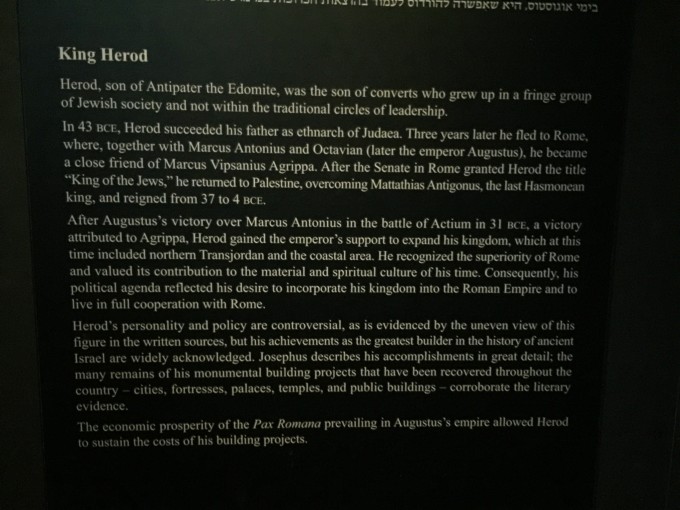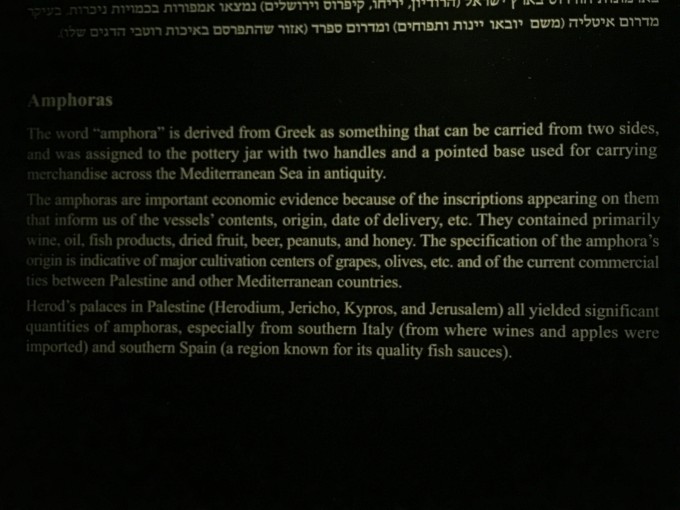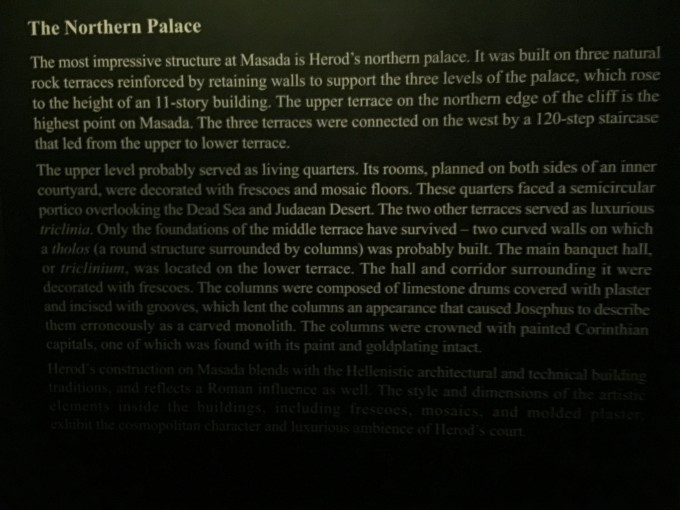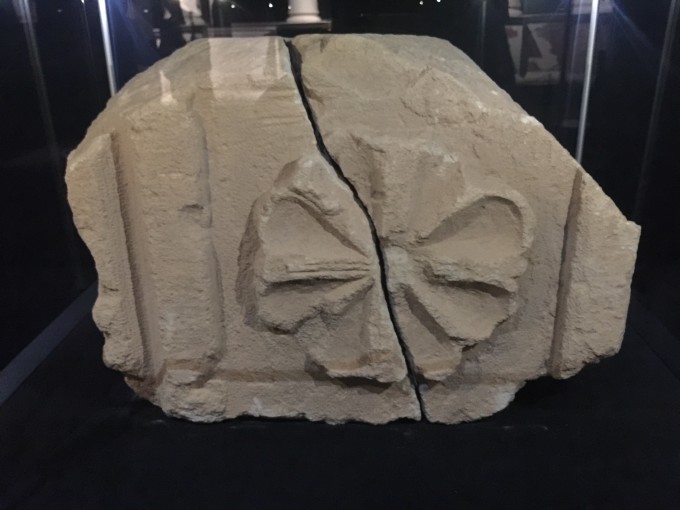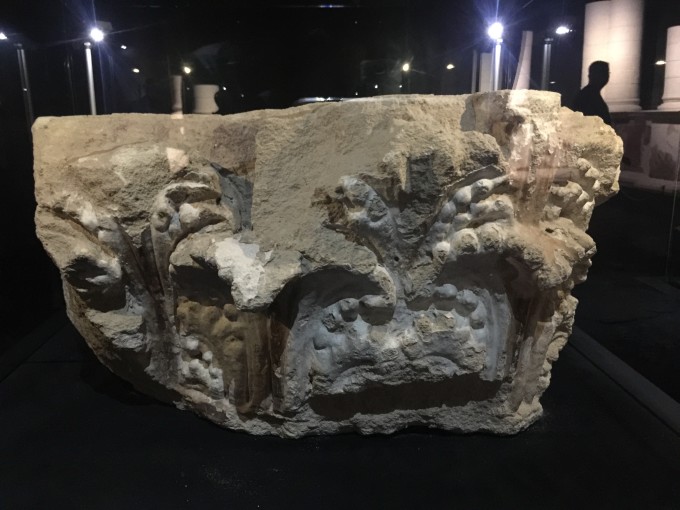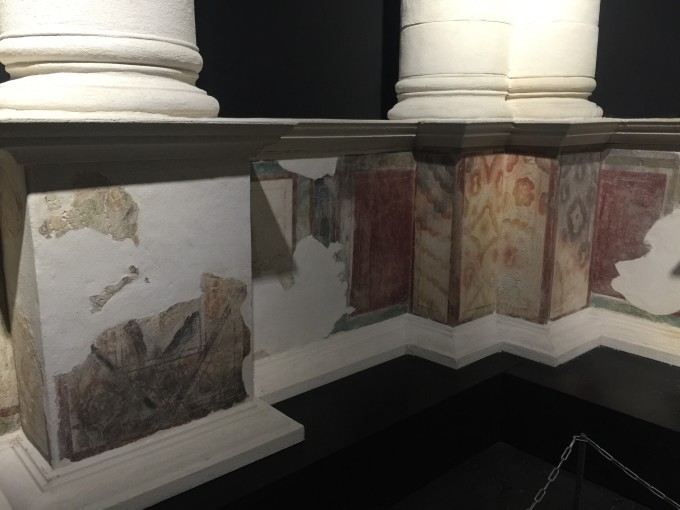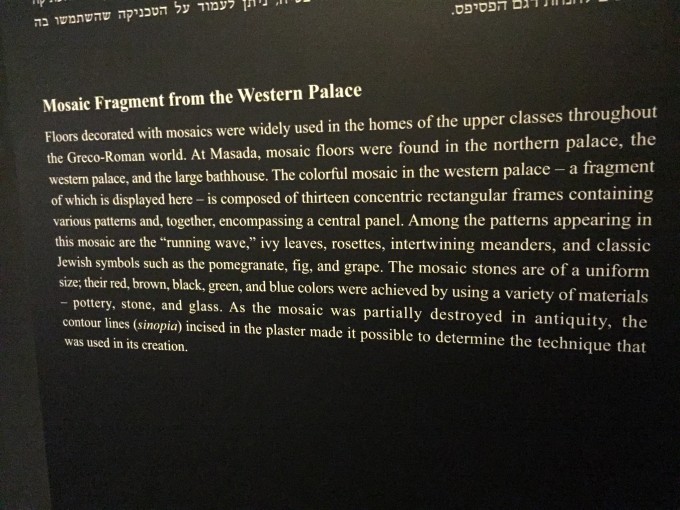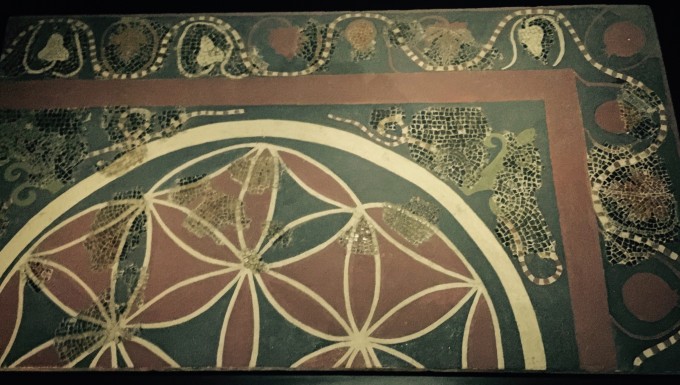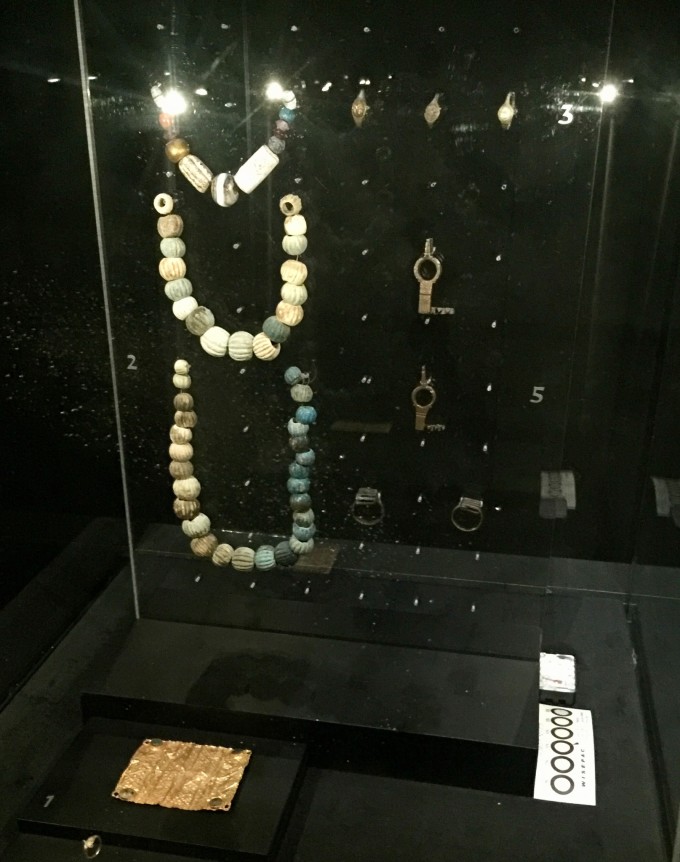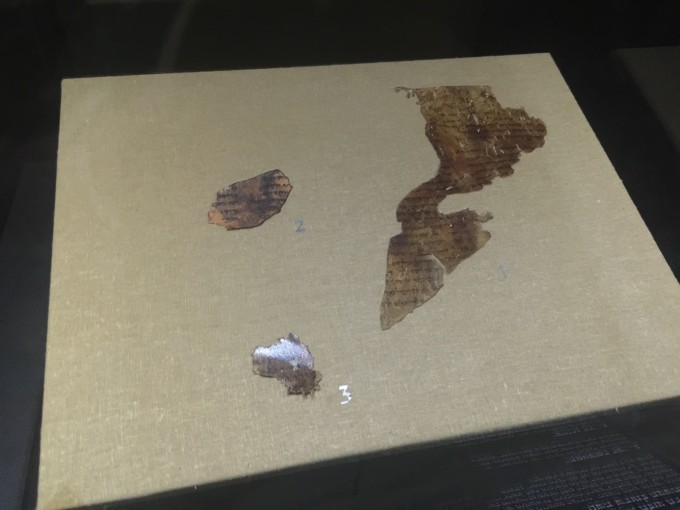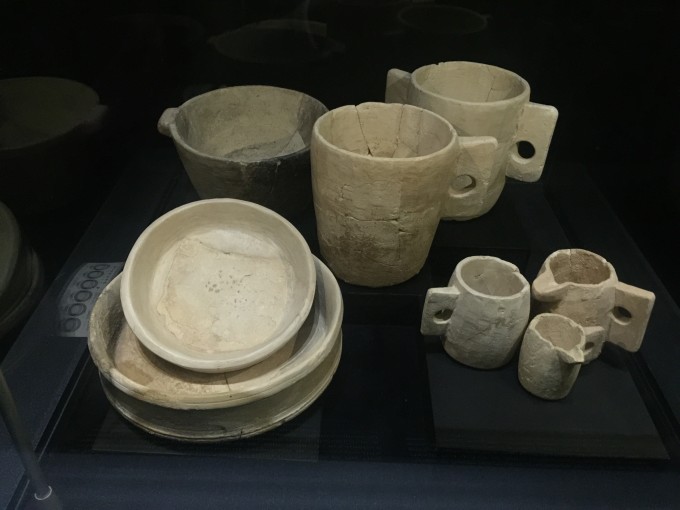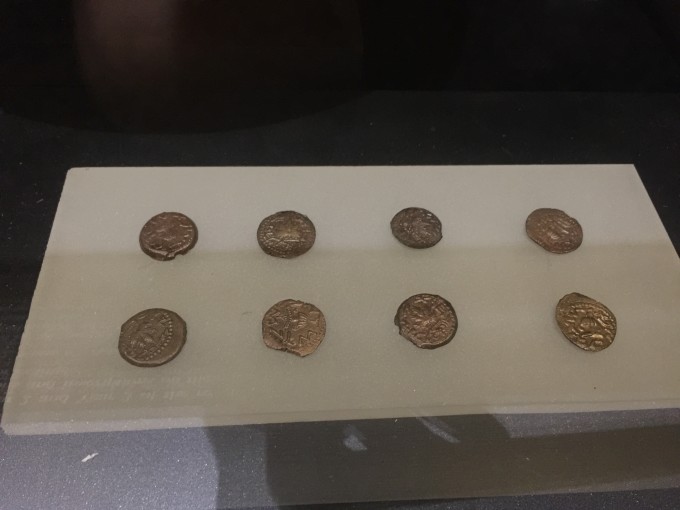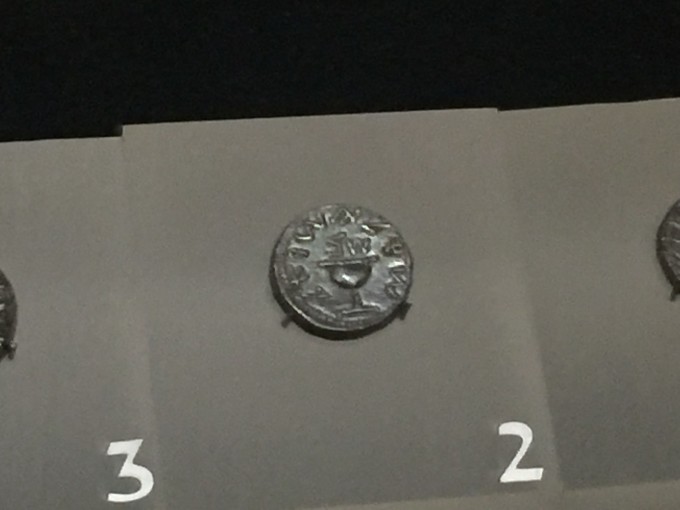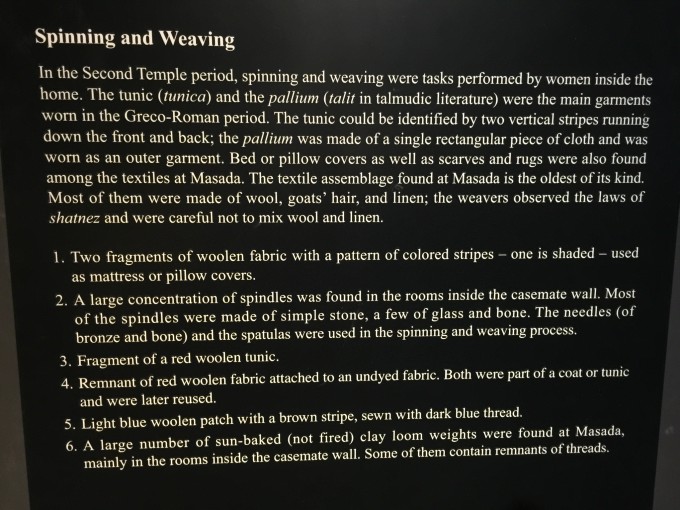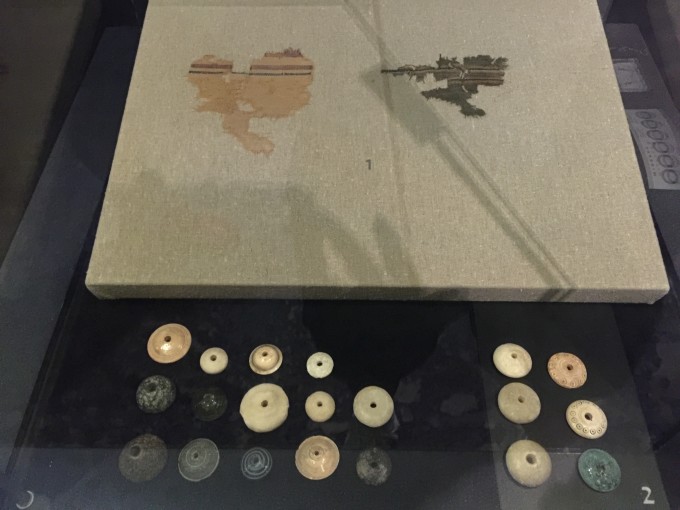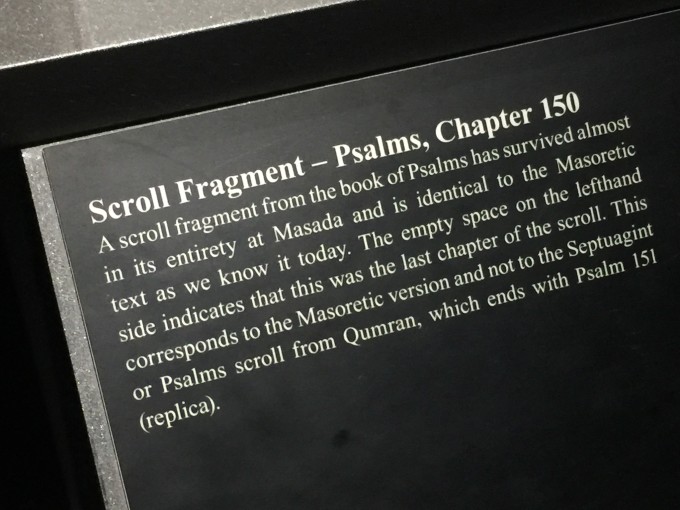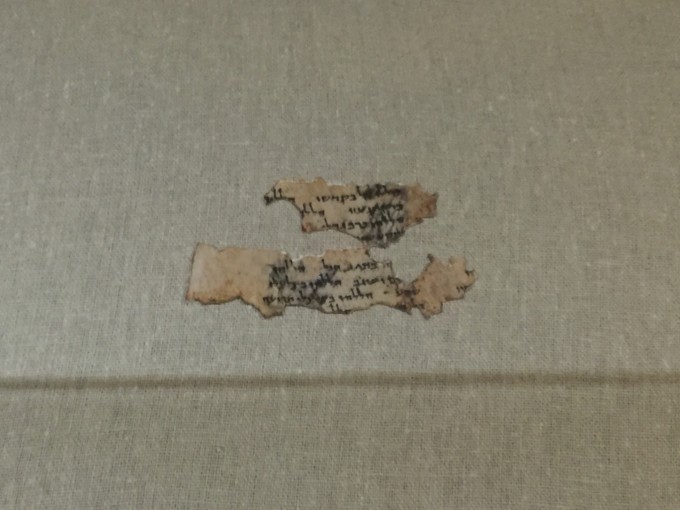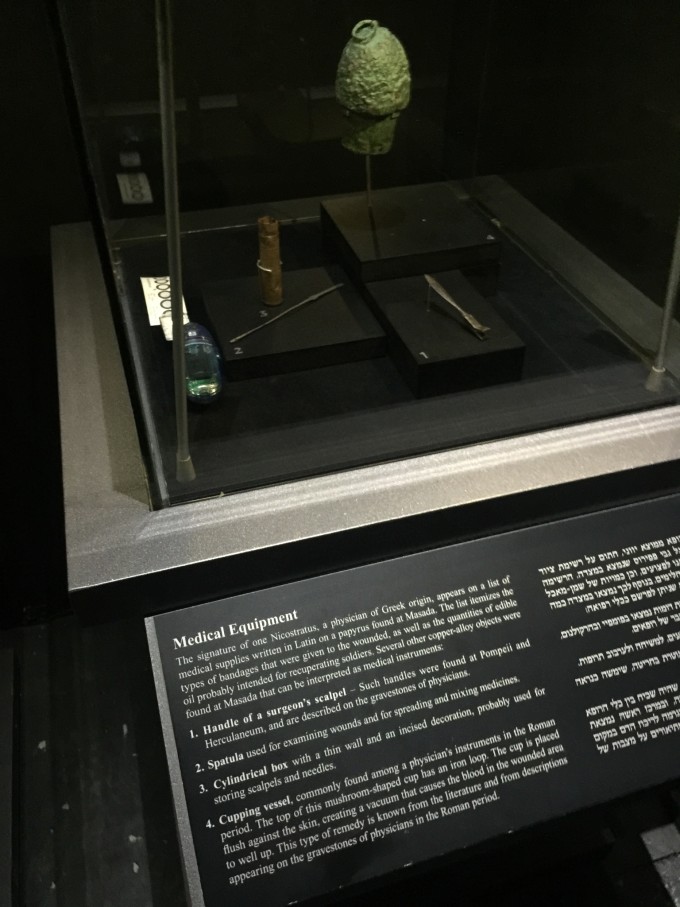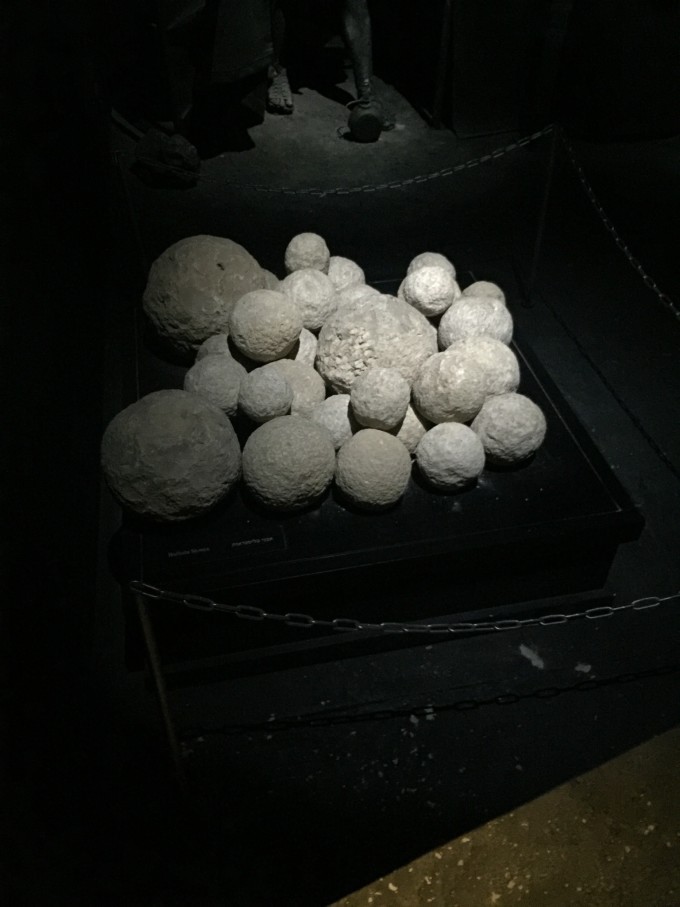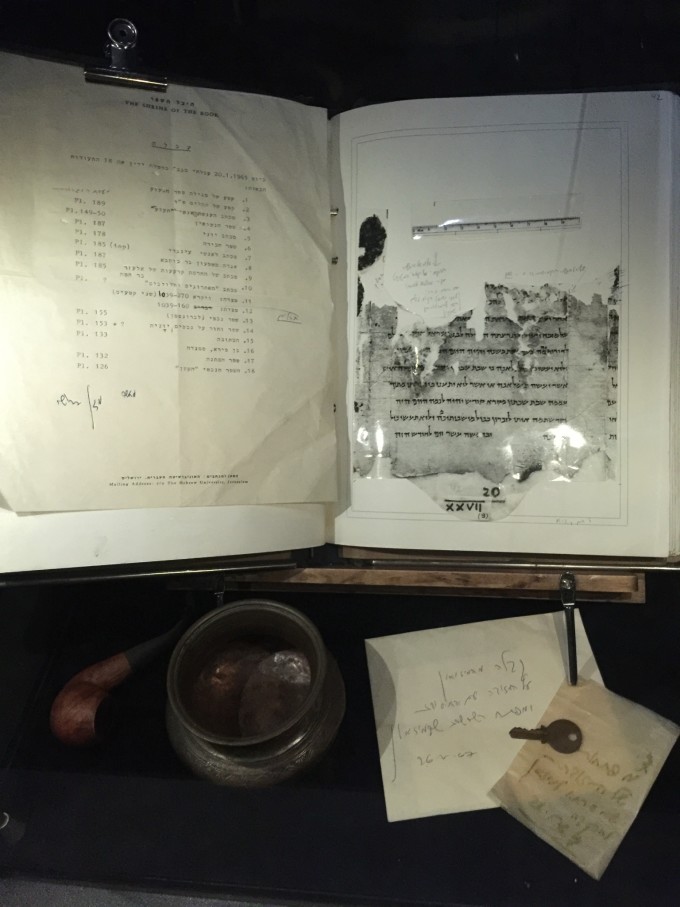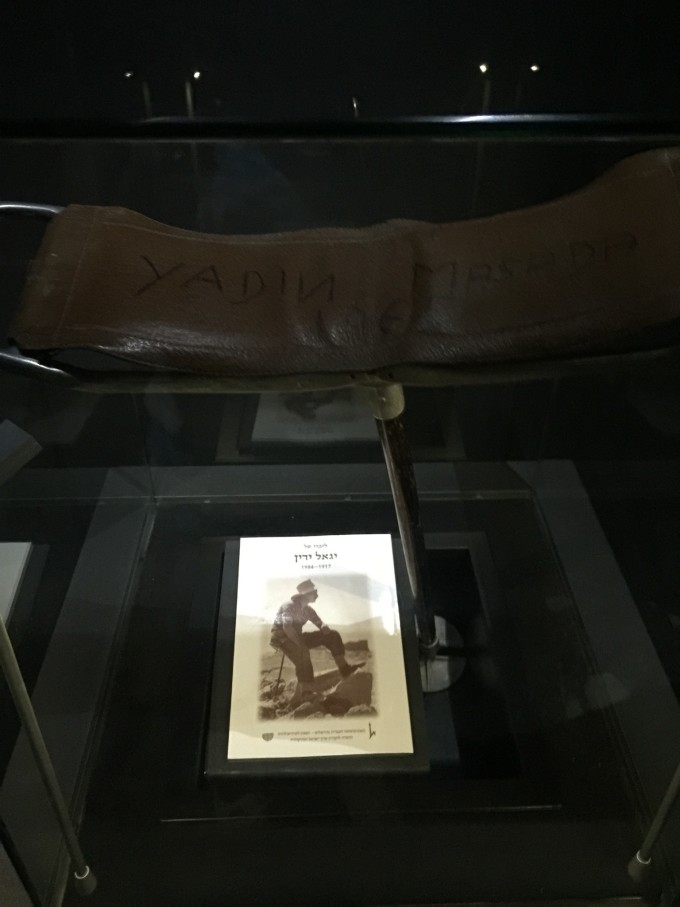以色列之行(七)蒼涼悲壯的馬薩達
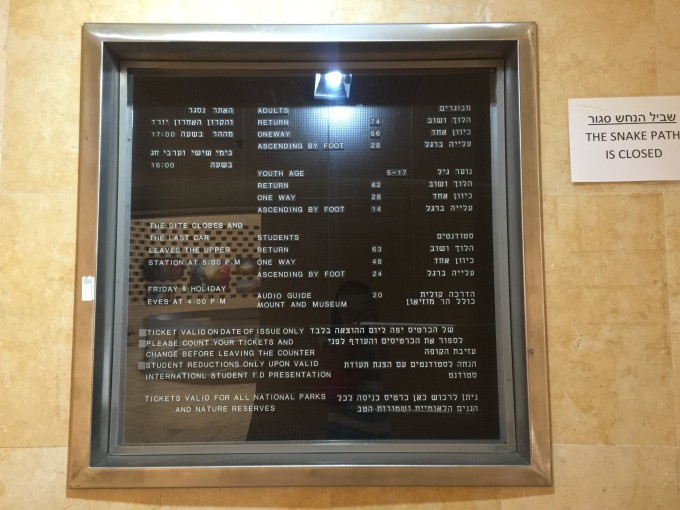
博物館里陳列了希律王時期的各類用具和物件,展示了希律王的奢華生活。
還陳列了當年發掘這裡的考古學家Yigael Yadin 教授的手稿和私人物品,以紀念他所做的偉大貢獻。
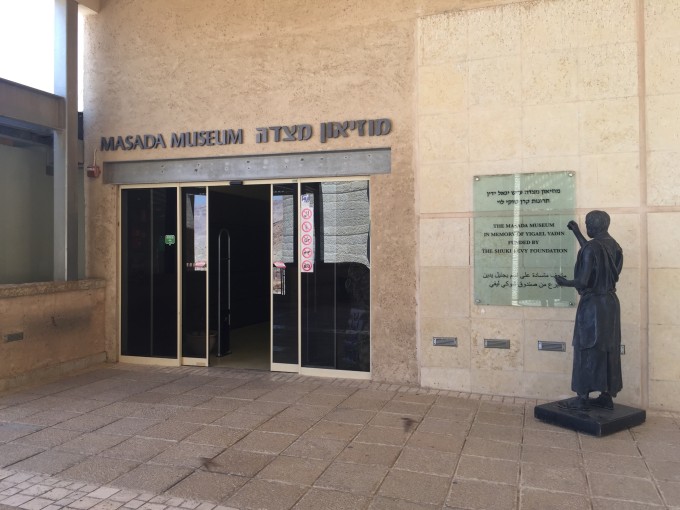
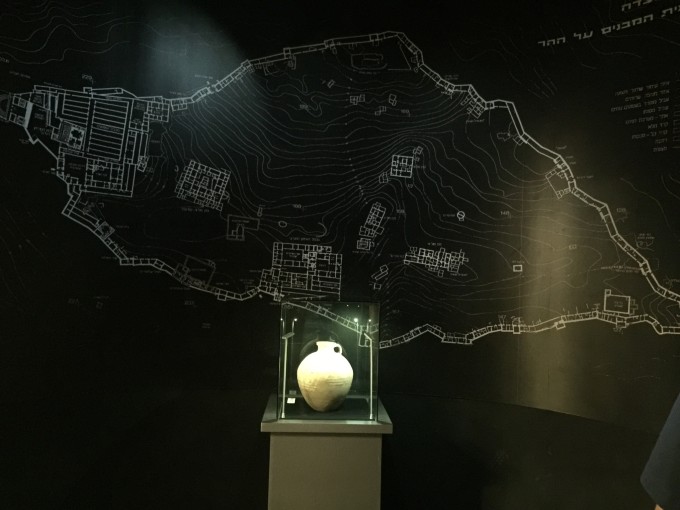
2.Pieces(碎片) of stucco(灰泥) in floral and grape-cluster(葡萄串) patterns.
3.Pottery(陶器) oil lamps(油燈) commonly used in the time of Herod’s reign(希律的統治時期).
4.Marble( 大理 石) bowl(碗;木球;大酒盃) with three handles(把手;柄) and a spout(噴口), probably imported from the Greek island of Delos( 提洛島 ; 愛琴海 西南部的 希腊 島嶼).
5.Group of armor(盔甲) scales(鱗片;規格) that probably belong to King Herod’s guards(守衛).
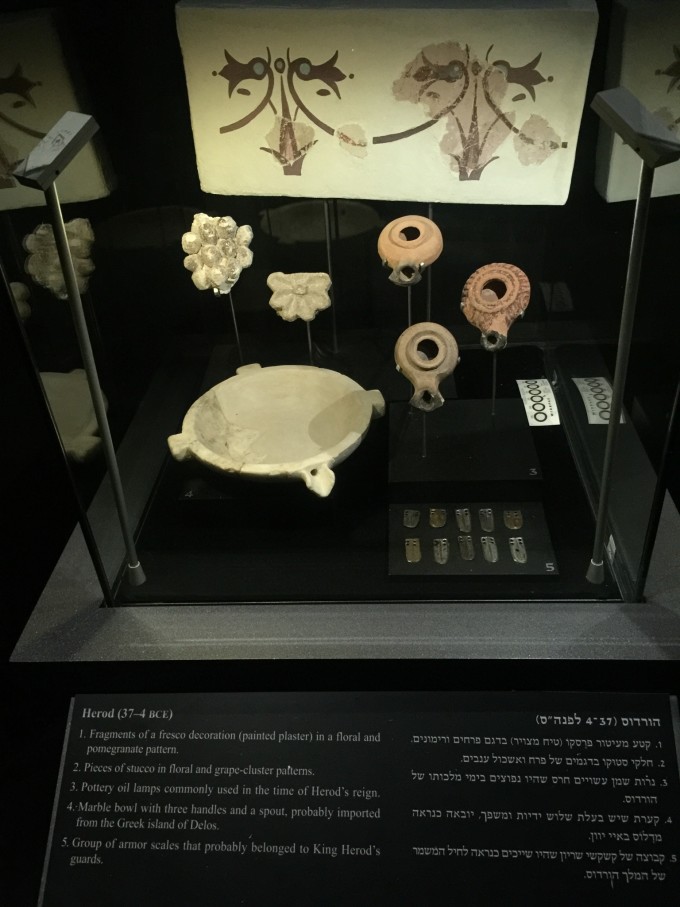
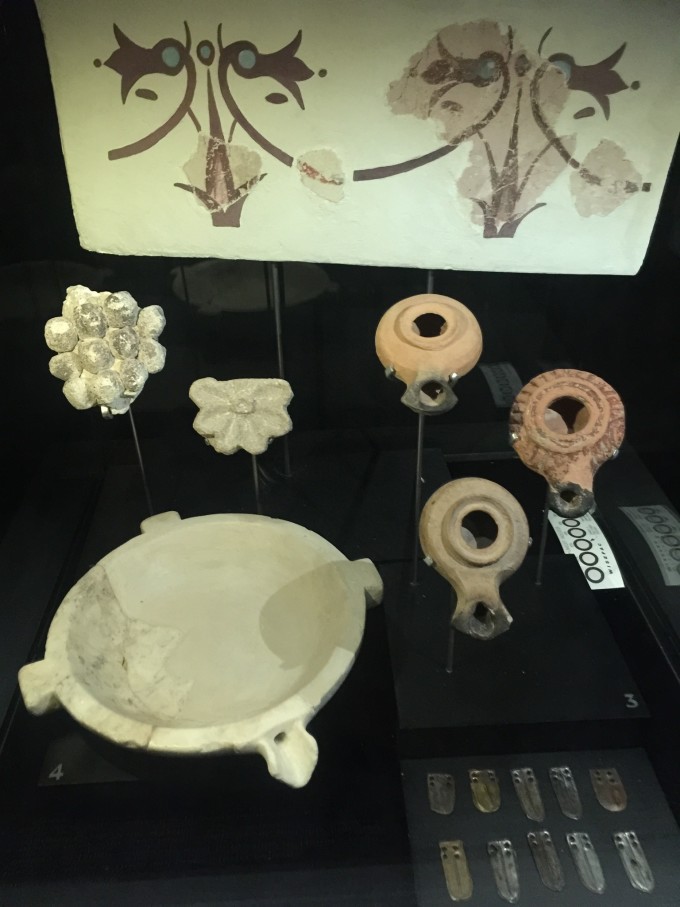
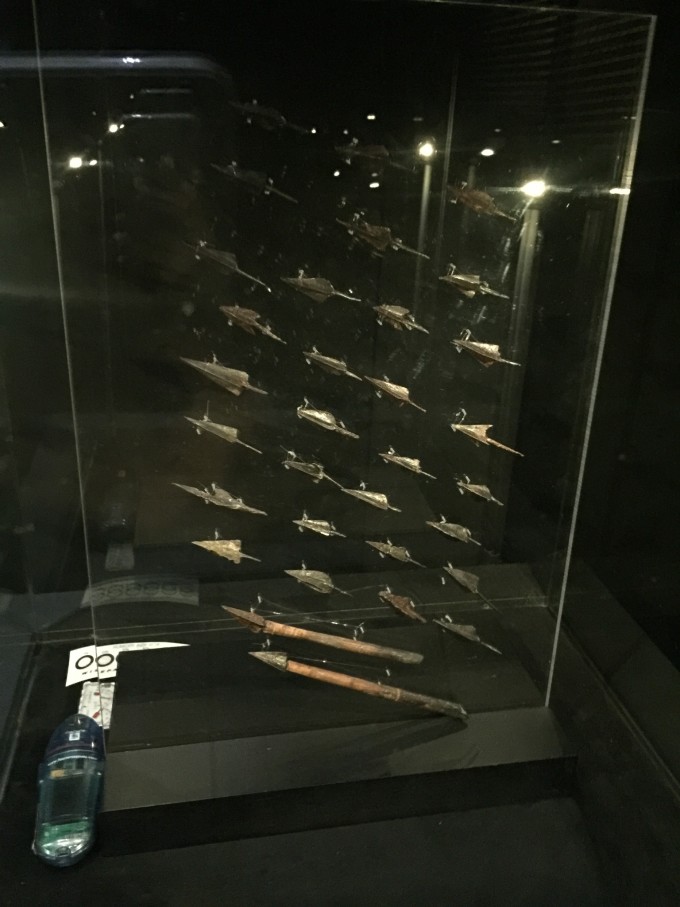
Assemblage(裝配;聚集) of iron arrowheads(鐵箭頭). Two of them were preserved with their wooden shafts(箭桿).
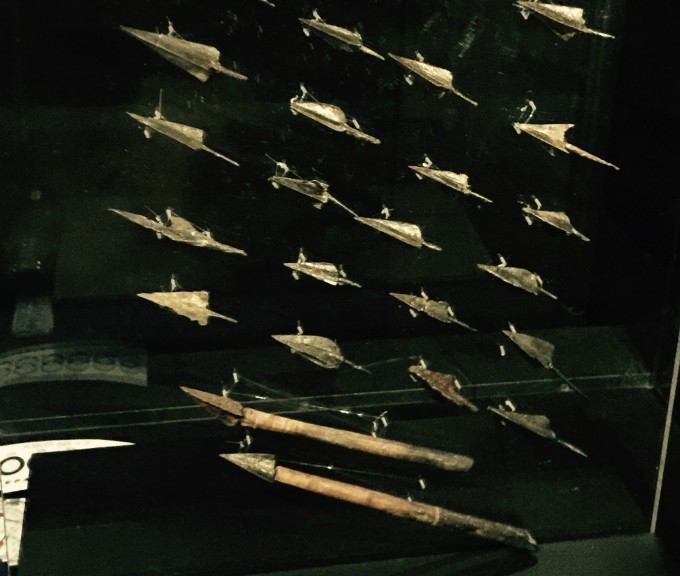
Herod, son of Antipater (安提帕特)the Edomite(以東人, 以色列 人始祖 以色列 -雅各的哥哥以掃的後代), was the son of converts(轉換) who grew up in a fringe (邊緣)group of Jewish society and not within the traditional circles of leadership.
In 43 BCE, Herod succeeded(繼承) his father as ethnarch(行政長官;民族部落殖民地等的統治者) of Judaea(猶地亞). Three years later he fled to Rome, where, together with Marcus Antonius(馬克· 安東 尼) and Octavian(屋大維)(later the Emperor Augustus(後來的 羅馬 皇帝奧古斯都—— 羅馬 帝國第一代皇帝 Octavianus Caesar 的尊稱。)), he became a close friend of Marcus Vipsanius Agrippa(馬爾庫斯・維普薩尼烏斯・阿格裡帕). After the Senate(古 羅馬 的元老院)in Rome granted(許可;授予) Herod the title “King of the Jews”, he returned to Palestine( 巴勒斯坦 ;聖地=Holy Land), overcoming Mattathias Antigonus(瑪他提亞·安提柯), the last Hasmonean(哈希曼王朝的) king, and reigned(統治) from 37to 4 BCE.
After Augustus’s victory over Marcus Antonius in the battle of Actium(亞克提姆/阿克提姆海戰,是 安東 尼與屋大維之間的一場決定性戰役) in 31 BCE, a victory attributed to(歸功於) Agrippa(阿格裡帕, 羅馬 統帥), Herod gained the emperor’s support to expand his kingdom, which at this time included northern Transjordan(外 約旦 ) and the coastal area(沿 海地 區). He recognized the superiority(優越;優勢) of Rome and valued its contribution to the material and spiritual culture of his time. Consequently, his political agenda(議程) reflected his desire to incorporate(使加入) his kingdom into the Roman Empire and to live in full cooperation with Rome.
Herod’s personality and policy are controversial(有爭論的), as is evidenced by the uneven view of this figure in the written sources, but his achievements as the greatest builder in the history of ancient Israel are widely acknowledged. Josephus describes his accomplishments(成就) in great detail; the many remains of his monumental(紀念碑的;紀念的;巨大的,雄偉的;不朽的,不滅的)building projects that have been recovered(複原) throughout the country-cities, fortresses, palaces, temples, and public buildings-corroborate (使鞏固;使加強;確定,證實)the literary evidence.
The economic prosperity(經濟繁榮) of the Pax Romana( 羅馬 帝國統治下的 和平 ) prevailing in Augustus’s empire allowed Herod to sustain(維持) the costs of his building projects.
博物館是學習英語的好地方,但是學習英語貴在堅持,像我這樣東一榔頭西一棒子,實在是費力費時效果不好。
